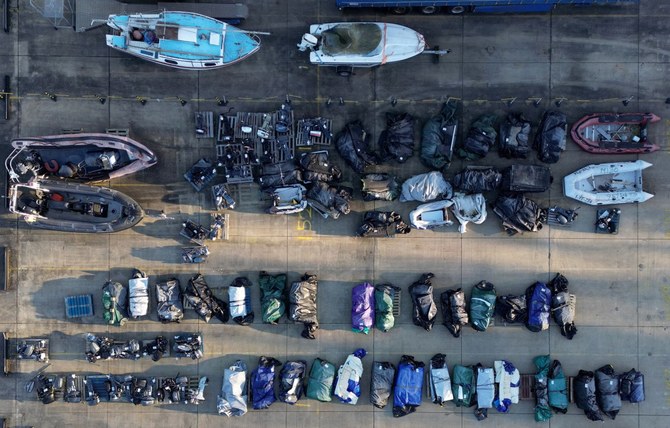
Live-streaming from the protest camps, posting on Facebook to counter state media and tweeting in English to reach the world: the story of Iraqs anti-government rallies is being told online.
When demonstrations broke out on October 1, Ali Chasebs Facebook timeline took a dramatic turn.
Gone were the posts about European football teams and in their place, a stream of updates from the growing crowds in the capitals Tahrir Square and photographs of people wounded by tear gas canisters and live ammunition.
"I post all my footage with the exact hours it was filmed," Chaseb, 28, told AFP from Tahrir.
Youth, making up 60 percent of Iraqs 40 million people, are hardly represented in its political class -- but they rule in the square.
Tahrir is the focal point for the month-long movement that is not only denouncing corruption and unemployment, but calling for a complete upending of the current political system.
The governments ban on social media sites hasnt stopped Chaseb or other Iraqis accessing them, with most using a virtual private network (VPN) to easily circumvent this modern-day Maginot Line.
They take to platforms like Facebook, Instagram and Twitter to share the movements latest news, as many have stopped trusting conventional outlets.
"The authorities are only publishing information against the protests to make people scared," said Chaseb, who posts in his native Arabic as well as English to reach a global audience.
- Our responsibility -
Throughout Tahrir, protesters can be seen filming on their smart phones to publish the scenes on Facebook or Instagram.
Many use the sites "live broadcast" feature, a clever workaround to the governments attempted ban on media outlets going on-air from the protests.
"Its become our responsibility to show the truth that conventional media cannot publish," said Alkasim Alabady, a 29-year-old blogger and dentist by training.
An orange and black mask hung from his neck, ready to be pulled up in the event of tear gas being fired in his direction.
"The state, and others who have refused to identify themselves, have been blocking local media from covering whats happening in Tahrir," Alabady said.
Around him, people snapped selfies with medical masks pulled up over their noses and mouths, picking out attractive filters before sharing them to their followers.
Those wary of government surveillance opt to use Telegram, an encrypted messaging application seen as more secure than WhatsApp.
If the mobile internet is too weak, they walk to adjacent neighborhoods to get a stronger signal before dashing back to the crowds in the square.
Many have spent back-to-back nights in Tahrir, bringing power banks with them to keep their phone batteries full or charging them in ambulances and even police cars.
Riot police have allowed protesters over the last week to set up food distribution areas, establish a makeshift medical center and occupy multi-story buildings.
It was a marked departure from the first wave of protests earlier this month, during which 157 people were killed, most of them demonstrators in Baghdad.
Another 100 have died since protests resumed, but activists have tried to keep the atmosphere convivial.
"We share pictures of non-violent protests and slogans, food being distributed and other messages of peace," Alabady said.
- A long week -
During the preliminary protests, most accompanied their online posts with the hashtag #Save_Iraqi_people.
Many more slogans have emerged since, among them: "Im here for my rights" and "No country, no class!" which has been championed by students on strike.
Protesters are also using social media to organize supplies, with Chaseb saying people were reaching out to ask for gas masks and to call for calm.
In recent days, crowds have amassed on two bridges leading from Tahrir to the Green Zone, where government headquarters and foreign embassies are located.
Tensions there were rising, with riot police unleashing volleys of tear gas and stun grenades at the crowds, which managed to get beyond a first security barrier on one bridge.
Many activists took to Twitter to call for calm and restraint.
Such information-sharing is not without risk though, Chaseb said.
"Even yesterday morning at 5:00 am, someone called me to say: We can kill your mother if you dont stop," he said.
He suspects "people collaborating with Iran and militias that control the state" were behind the threats.
It had been a long week for Chaseb, but he appeared unfazed.
"Its important to share all of this information. Its the only way I can sleep at night," he said.











